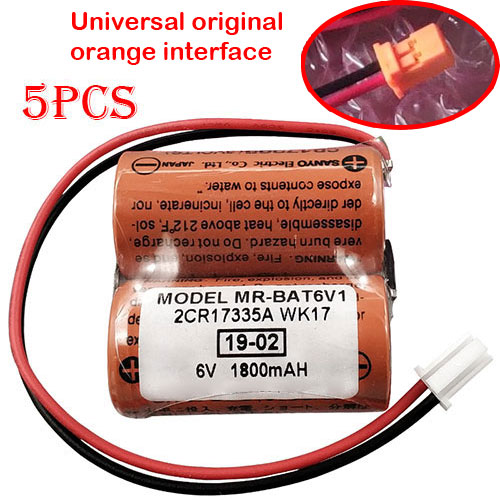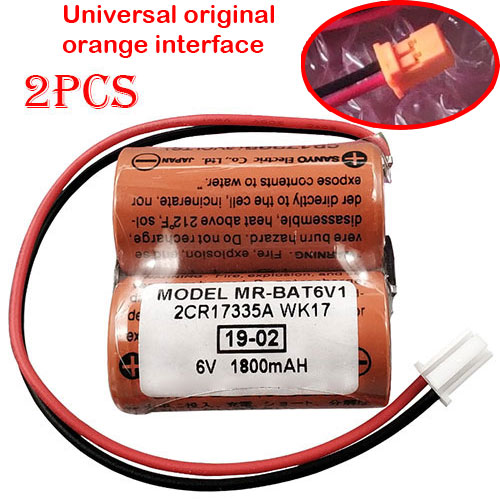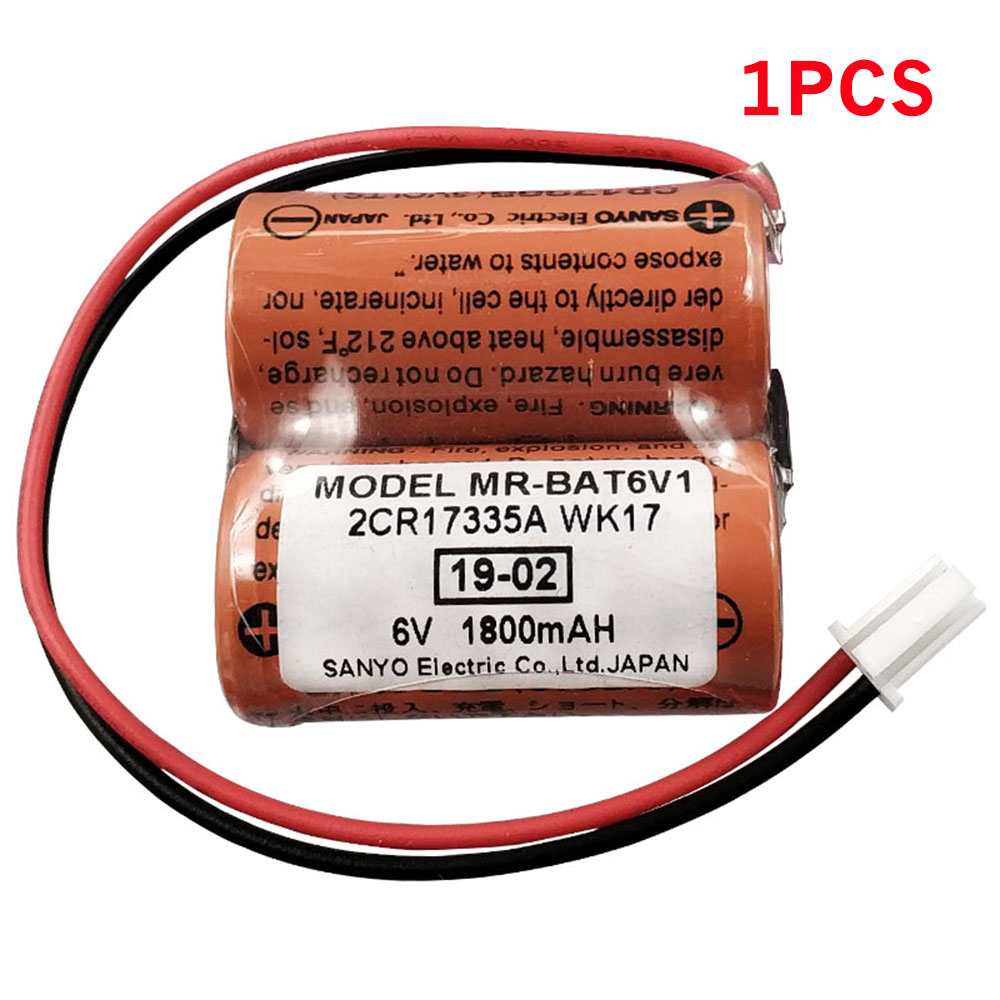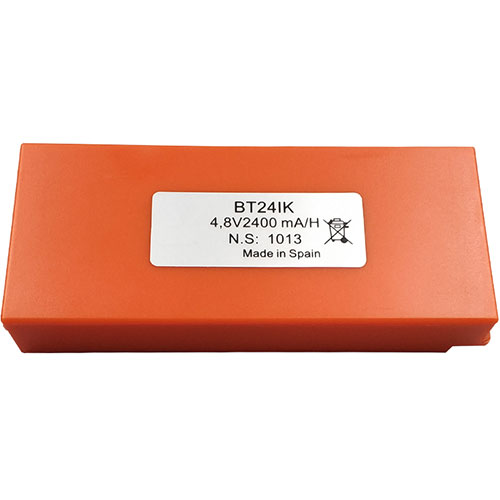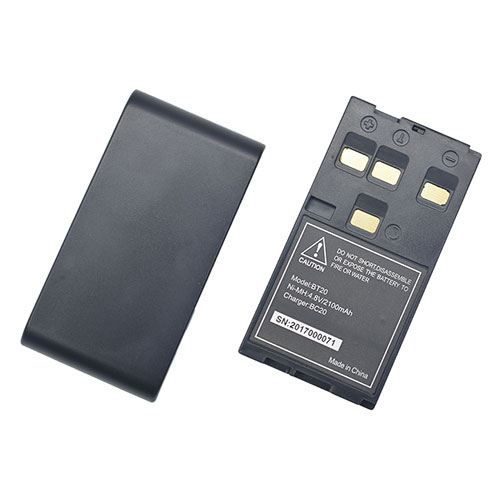For those hunting the best gaming monitor, the feature list is obviously a top priority. You’ll need a fast refresh rate and Adaptive-Sync for sure. HDR and extended color would be nice too, and how about some zooty styling and cool RGB? An ultra-wide curved screen can sound cool too. But when you actually have to open your wallet, suddenly value rises to the top of the must-haves list. What does a monitor need to have to be adequate for gaming? Is there an inexpensive monitor that is more than merely competent?
Today, we’ll be trying to answer that question with a review of the Pixio PX247. It wasn’t too long ago that any IPS panel carried a price premium. Now , their prices range widely. The PX247 is a 24-inch IPS display with a 144 Hz refresh rate, AMD FreeSync and nothing more. But as I write this, it’s selling for a mere $170.
Specifications
There are plenty of things missing from the PX247 that other gaming monitors offer, such as HDR, extended color, aiming points and fancy RGB. But these features are part of the Would Be Nice List. Does one really need HDR and extended color? The PX247 delivers just what’s needed for gaming with a native 144 Hz refresh rate and FreeSync for fighting screen tearing.
Since FreeSync bottoms at 48 Hz, low framerate compensation can take over to keep frame tears at bay. And since the PX247 has 1080p resolution, you won’t often see speeds below 60 frames per second (fps), even without the best graphics card. A card costing about the same at this Pixio ($170 currently) can keep the action moving smoothly. And although it hasn’t been certified by Nvidia, we got G-Sync to run on it (to see how, check out our How to Run G-Sync on a FreeSync Monitor article).
The PX247 certainly seems to have the goods on paper. It’s a no-frills monitor that has just what’s needed and nothing more.
Assembly and Accessories
The PX247 arrives in a carton barely larger than a briefcase. Its contents are well-protected by flexible non-crumbly foam, so there seems little chance of shipping damage.
You’ll need a Phillips-head screwdriver on hand to bolt the panel, upright and base together using the included hardware. A small trim piece in the back covers up the screws once installed. If you prefer a different mounting solution, there’s a 75mm VESA lug pattern, though you’ll need to source your own bolts.
The only bundled cable is DisplayPort, while the power supply is a small wall-wart.
Product 360
The PX247 has a simple design that makes no attempt at game-oriented styling. It could be called a sleeper because one would never know that it houses a 144 Hz refresh rate or Adaptive-Sync.
The front has an almost-flush bezel that’s around 11mm wide on the top and sides and 17mm wide at the bottom. At right are small icons indicating the four control keys and the power toggle. The stand offers only a 5/25-degree tilt adjustment. Though the parts look thin, the base and upright are solid metal and fairly solid. Our only complaint is that the panel sits quite low on the desktop. A pedestal would be a simple solution to this issue.
The side profile shows a thin/thick design where the upper two-thirds are just 8mm deep. The bottom bulge houses all internal components and is 32mm thick. If you use a monitor arm or bracket, it attaches at the bottom point. The panel’s back is metal in the thin section and acts as a natural heatsink.
Video inputs are at the bottom and face rearward. You get one each of HDMI 1.4 (limited to 120 Hz) and DisplayPort 1.2 (144 Hz with FreeSync or unofficial G-Sync). The PX247 also has a 3.5mm headphone jack, which you’ll want to use because the built-in speakers are extremely quiet and tinny.
OSD Features
The OSD is simple but includes everything needed for gaming and for calibration. It’s divided into six sub-menus and navigated with the tiny buttons below the front bezel.
The Display Setup menu has luminance controls and four available picture modes. Standard is the default and the only one that allows full adjustment. There’s an aggressive dynamic contrast option that causes some clipping of highlight and shadow detail. A well-implemented overdrive works best on its middle setting and eliminates motion blur almost entirely with no visible ghosting. It works seamlessly with Adaptive-Sync.
The Color Setup menu has three preset color temps, plus a user option with RGB sliders. If you want the easiest road to accurate color, choose the Warm option. The default, Normal, is much too cool in tone. There are no gamma presets, which is unfortunate since gamma, while reasonably linear, is a little light in tone. A Low Blue Light slider adjusts the white point for easier reading, and Black Equalizer can help gamers see into deep shadows better by raising the black level.
The Misc menu has a FreeSync toggle and an option called MPRT, a blur-reducing backlight strobe that doesn’t work very well. Turning it MPRT takes out Adaptive-Sync and several other image controls, including brightness. It also creates an odd phasing effect that we could plainly see in the Blur Busters moving photo test. There is absolutely no reason to use it. Adaptive-Sync with overdrive on medium is the best possible setting for smooth motion and blur reduction.
Setup and Calibration
The PX247 comes set to its Standard picture mode, which has all image controls available. Sticking with that preset, we measured the default Normal color temp and found it very cool in tone. The Warm preset is far better for both grayscale and color accuracy. Further adjustments to the RGB sliders gave us an excellent result. This monitor is capable of very accurate imaging that’s far better than its price suggests.
Gaming and Hands-on
One of the nice things about a simple monitor like the PX247 is ease of setup. There are only a few options to deal with before you can forget about the details and just enjoy gaming. Gaming PCs with an AMD or Nvidia graphics card both recognized the Pixio’s 144 Hz and Adaptive-Sync capabilities and configured themselves accordingly. G-Sync, which the monitor isn’t officially certified for, requires the extra step of checking the enable box in the appropriate dialog, but we were ready to play within moments. There is no overclock required to run at 144 Hz if you connect via DisplayPort. HDMI is limited to 120 Hz.
Though resolution is FHD, the PX247 is only a 24-inch screen, so pixel density is a decent 92 pixels per inch (ppi). If you look closely, you can see the pixel gaps, but at a 2-3 foot distance, they are not visible. This is typical for a 1080p screen this size. Detail was sharp and clear on the PX247, thanks to a tight anti-glare layer. There was no grain or other physical image artifacts.
Color looked bright and saturated within the confines of sRGB, which is all you need for a Windows app. Photos, meanwhile, looked natural and vibrant, while the video showed accurately and cleanly. Contrast is at the same level as any IPS or TN screen running in SDR mode. Blacks were reasonably true but not at the depth of a VA panel, or one with a full-array local dimming backlight. There was no improvement when using the PX247’s dynamic contrast feature. It clips too much detail and should be left off.
We also saw no benefit to the MPRT backlight strobe. It didn’t reduce blur. In fact, an odd phasing effect took place that made moving objects and backgrounds a little fuzzy. It’s better to leave things set to 144 Hz with Adaptive-Sync in play.
Turning to games, we moved to the interior of an abandoned building in Tomb Raider. There is a nice water effect here that shimmered and glowed with a realistic texture. Highlights popped, and movement was perfectly smooth. The frame rate stayed locked at 144 fps, no matter how detailed the environment. The PX247 is a performance-oriented monitor for sure. We saw no color issues worth noting and enjoyed vibrant hues and drab tones where appropriate. Contrast was, again, equal to most IPS or TN screens we’ve reviewed. The PX247 carries no advantage or disadvantage when it comes to dynamic range.
Call of Duty WWII is HDR-capable but also looks quite good when played on an accurate SDR monitor, like the PX247. This game would look significantly better on a premium screen, like the 4K resolution Acer Predator X27, but at the Pixio’s price, there is nothing to complain about. Textures looked super realistic with enough contrast to create a tactile feel to the image. Grit and grime played a strong supporting role in making this game look good.
We played these games on the PX247 for several hours, and at no time was there a perception that this is a cheap monitor. The PX247 looks every bit as good as many more-expensive screens.
Uncalibrated – Maximum Backlight Level
We rounded up a somewhat diverse group of screens to compare against the PX247. We’ve already reviewed two other Pixio panels, the Pixio PXC273 and Pixio PX278. Also here is the Cooler Master GM27-CF, BenQ Zowie XL2411P and Acer Predator XN253Q. Panel technology includes IPS, VA and TN.
Pixio claims 350 nits max brightness for the PX247, but our sample couldn’t quite get there. The monitor’s 310.2358 nits though is more than adequate and on par with other SDR-only gaming monitors. The PX247 also goes down to an ideal minimum of 53 nits when brightness is zeroed, perfect for playing long hours in a darkened room.
With a reasonable black level of 0.3193 nit, the PX247 comes just a tad shy of the average 1.000:1 contrast figure we see from most IPS and TN screens. If you want a more dynamic range, Pixio’s PXC273 offers an excellent 27-inch VA panel. But among the other TN panels in this group, the PX247 holds its own.
After Calibration to 200 nits
Our calibration (see the Calibration Settings on page 1) improved the PX247’s contrast to 1,055.7:1, showing a nice gain. RGB sliders that start center range are the reason. We were able to make balanced adjustments that improved dynamic range. You can get close to these results by changing the color temp preset from Normal to Warm. That raised the gamma value slightly too, which is a good thing.
ANSI contrast suffers a bit because our sample had a few slight hotspots -- more on that later. Image depth is still equal to any good IPS panel we’ve reviewed though. For its $170 selling price, we can’t complain. Only a VA panel will have a wider dynamic range. And the PX247 is certainly superior in quality to most TN displays in this regard.
The PX247 needs some adjustment from its default settings, which are Standard picture mode and Normal color temp. The image looks blue in tone and lacks pop. Luckily, the fix is pretty easy.
Grayscale and Gamma Tracking
The first chart shows the PX247’s default state. The white point is visibly blue from 20% brightness and higher. The tint grows along with brightness until the error at 100% is around a Delta E (dE) of 9. Gamma is reasonably linear but runs a little light (lower values are brighter). Unfortunately, there are no gamma presets to help with that issue, but there are more color temp options.
Simply changing to the Warm color temp made a visible improvement. There are still slight blue errors at 90-100% brightness, but other steps have no visible problems. One could make this change and be satisfied.
Tweaking the precise RGB sliders revealed the PX247’s full potential. After we did this (see our recommended settings on page 1), there were no visible errors, and gamma became ever so slightly better. If you don’t have the means to calibrate, our settings will get you close to these results. At the PX247’s price point, this is excellent performance.
Comparisons
Set to its Normal color temp, the PX247 isn’t impressive, but after a few adjustments, it improves to the top tier. A 1.01dE average is about as good as it gets for any monitor, especially when it costs under $200.
The PX247’s range of gamma values is very tight, which helps offset the light blacks and mid-tones we observed. Though we’d prefer the average to be 2.2, the PX247 isn’t too far off the mark.
Color Gamut Accuracy
The PX247’s gamut tests ran similarly to the grayscale benchmarks. In Standard mode with color temp set to Normal, the entire gamut is pulled in the direction of the white point, which is too blue. That error de-saturates red and pulls the secondaries off their hue targets.
Changing the color temp to warm helped somewhat. This reduced the secondary (magenta, cyan, yellow) hue errors, and red became a little more saturated. Dialing in the RGB sliders made the most impact. Red was much better with all other colors near-perfect. We’re impressed to see a 1.49dE average from a $170 monitor.
Comparisons
Though the PX247 doesn’t offer great out-of-box accuracy, it has a lot of potential for the money. At minimum, we recommend changing the color temp to Warm. It improves the color error to a very low 2.43dE. Calibration takes it even further to just 1.49dE, which good enough for second place in our competitive comparison group.
Three of the monitors here, including the other two Pixios, offer extended color gamuts. The Acer and BenQ have a tiny bit more color volume, but it’s an amount that’s invisib;e to the naked eye. The PX247 is an sRGB screen and fills that gamut. The gamut chart shows a slight under-saturation in red, but a little bonus blue makes up for that. We wouldn’t expect to see this screen performing color-critical tasks, but for most work, and certainly for gaming, it is well qualified.
The G27QC automatically switches over when an HDR10 signal is detected. It applies the proper luminance curve and locks out all image controls except for brightness. Adaptive sync and 165Hz remain in play. There is no dynamic contrast option available, but Gigabyte’s high-contrast VA screen does a reasonable job with HDR content.
HDR Brightness and Contrast
Maximum output in HDR mode is a tad higher than SDR, just over 333 nits. In our comparison group, that puts the G27QC at the bottom. The Cooler Master is blank because it doesn’t have HDR. The top four screens exceed the VESA DisplayHDR 400 standard. The G27QC is saved by its very-low black levels. It’s the best of the screens that lack dynamic contrast. The Asus and ViewSonic panels manipulate their backlights on a frame-by-frame basis to provide the widest possible dynamic range. That is apparent in the third chart with the contrast results. Though the G27QC is respectable among value-oriented monitors, it pales in comparison with the top two screens. Overall though, HDR looks OK with a little more impact than SDR due to accurate rendering of the EOTF luminance curve.
Grayscale, EOTF and Color
Our HDR grayscale test shows a visible green tint in the G27QC’s result. It’s unfortunate that the RGB sliders aren’t available. You can adjust brightness if you wish though we recommend maxing it for the best possible HDR image. The EOTF chart looks good with a slightly-too dark rendering in the lowest steps. The tone-mapping transition point is above 60% which is solid performance.
Considering the gamut chart, we can see a little over-saturation in red and blue, but most targets are fairly close to the mark. Green tracks well until it runs out at around 90%. Hue values are accurate which makes overall HDR color quality quite good.
Viewing Angles
Viewing angles are a common reason for users to favor IPS panels, and the PX247 is a good example. It maintains solid luminance at 45 degrees to the sides with only a slight 10% reduction. Detail is still well-rendered with all steps clearly visible. A green tint is visible from this view, but this is typical of all the IPS panels we’ve photographed.
When viewing the monitor from the top you can see a blue shift, 20% light reduction and a moderate loss of detail.
Screen Uniformity
Our PX247 sample showed a little glow in the upper left corner when viewing a black field pattern. This issue was not visible at higher brightness levels, nor could we see it when gaming. The tight front screen layer fit is likely to blame for this. Though the PX247 takes last place here, the flaw did not detract from our gaming or work experience. There are neither visible uniformity issues nor variation in brightness in anything but a totally black (zero signal level) screen.
Pixel Response and Input Lag
Here’s where the PX247’s value really shines. Its response and lag scores helps it compete among the quickest monitors we’ve tested. 7ms is a typical response time for a 144Hz screen. At that speed, motion blur is a non-issue and eliminates any need for a backlight strobe. With just 26ms of total control lag, the PX247 equals the Cooler Master with a higher refresh rate.
We often talk about the ‘last 1%’ rule. There are many displays that provide 99% of the performance of the premium products but for more reasonable prices. Squeezing out that extra percent of performance requires more than a little additional investment. But there are some monitors that attempt to defy established pricing norms. Though IPS panels have come down in price over the past several years, they still represent the top of the cost spectrum in every category. The Pixio PX247, however, is an outlier.
For $170 at this writing, the PX247 delivers a reliable 144 Hz refresh rate and FreeSync, and we even got G-Sync to work equally well. In addition to an effective overdrive, video processing cuts no corners and delivers the same smooth tear-free motion we’ve seen on dozens of more expensive displays.
There are three things we’d like to see added to this monitor. The color temp should be set to Warm by default, as it would put the PX247 on our Calibration Not Required list. That simple change lowered the average error from 6.12dE to 2.39dE. The second thing would be gamma presets, or a tweak to the default gamma to make it a little darker. Our calibration improved the average value a little, but at 2.12, it’s still a tad low, meaning you won’t get the best possible image depth and color saturation. (Speaking of that, we managed an impressive 1.49dE score in the color gamut test. That’s professional monitor territory) Finally, the PX247’s stand, while solid enough, is too low for most desktops. A taller upright could fix that easily.
The Pixio PX247 is more than merely competent. It provided hours of fun and we never felt like we were missing out due to the lack of extra features, like HDR or extended color. Plus, frame rates will always be at or near 144 fps with most video cards.
For budget systems, it’s hard to imagine a better value than the PX247. Of course, there are larger screens out there, and today’s standard is more in the 27-inch realm. But if you are looking for maximum bang for the buck, definitely check out the Pixio PX247.
